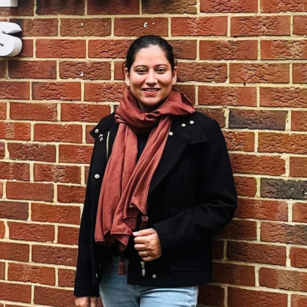In this blog, Dr. Fletcher Tembo, the Director for the Making All Voices Count Programme, an international initiative that examined how to harness new technologies for enhancing citizen engagement and government responsiveness and accountability, gives his reflections of the Citizen Empowerment Programme (CEP) International Seminar in December 2017, at which he was a keynote speaker on how to respond to second generation accountability assumptions and approaches.
I was privileged to provide a keynote speech at this Maputo conference, having listened to various presentations and mixed the insights with those of my own from years of managing accountability projects and the most recently as Director of the Making All Voices Count Programme.
I came out with six talking points that I would consider as among the main Accountability 2.0 practicalisation points for consideration.
1. Going deeper – into citizen identities and how they are negotiated
When Fernanda Farinha, the Director for CEP opened the first panel session of the seminar, the main issue that caught my attention was her reference to ‘going deeper to get to where real people are’ (rephrased in my note-taking).
Three meanings and implications sprung to mind:
- a geographical depth as in covering more so as to get to provinces that are hard to reach;
- going beyond the citizens that are easier to reach to those that are difficult to reach even within the same geographical location;
- and getting into a deeper understanding of the citizen that we are talking about in terms of the construction of citizenship as a basis for understanding citizen engagement and empowerment.
The last of these three meanings remained my preoccupation as it provoked growing thoughts of my own discussed in the rethinking social accountability piece and then more recently in Making All Voices Count, as we tried to interrogate who was included in the ‘All’, what it takes to ‘Make’ them Count, and actually what success, as in ‘Counting’, would look like in practice.
Erica Nelson’s illumination of ‘intersecting inequalities’, by focusing on citizen ‘identities’ and ‘categorisation’ illuminated the need to go beyond the categorisations of well known labels such as ‘youths’ or ‘women’ to discover the social political identities that they form of themselves. To this I would add, ‘representations’ as a way to unpack and understand forms of representations and representativeness through which citizen identities are used or even manipulated in the process.
For instance, how the constructions of ‘chieftancy’ along with its associated forms of representation and power in Africa interface with the formalised institutions of representation such as elected members of parliament and councillors, makes a huge difference to realities of everyday life engagement for the poorer citizens.
The social accountability agenda needs to be anchored into these multiple identities, categorisations and representations, providing political leverage to citizens in these areas.
2. Creating an enabling environment in closing spaces
In dynamic environments such as Mozambique and several others, one cannot help but see that the space for civil society engagement is constraining. Anu Joshi’s opinion piece points to the latest CIVICUS Monitor that indicates that almost ten percent of the world’s population lives in countries with closed civic space and over a third live in countries with repressed civic space.
Anu further points to the increasing sophistication that governments are using to ‘manufacture consent, sabotage dissent’ and shape public attitude to democratic dissent. These realities were also echoed at this year’s Stockholm Internet Freedoms Conference.
These growing contexts in my view undermine the extent of ‘dialogue’ as mechanism for citizen engagement, and create difficulties in terms of the ‘alignment with government policies’ agenda; the two concepts that came out strongly during the seminar.
This is because in situations of closing space, most civil society organisations and ordinary citizens experience threats and unclear / inconsistent application of rules of the game, which create a risky and unpredictable working environment. These situations do not render themselves to nurturing deliberative democracy through dialogue.
The strategic social accountability positioning here in my view is more about moving to the ‘creating an enabling environment’ coming from finding ‘room for manoeuvre’ using any available space that shows up in the process of contestation, negotiation and power, including with state actors. In these cases, actors might largely prefer anonymity, and might themselves change roles as the dynamic keeps changing, as was evident in the MAVC supported JamiiForums in Tanzania.
3. Local to national, national to local
The urge to go from local to national is easily linked to the idea that social accountability initiatives would take advantage of decentralisation processes. However, decentralisation, regardless of its technical pronouncements in policy documents is a highly political process and often a locus of power between ruling governments and local realities. In some cases, it can be used as a means of local penetration resulting in contestations between the elected representatives and the bureaucracy who are perceived as instruments of government.
Furthermore, as exemplified at the seminar, no single province is similar to another (e.g. between Nampula and Gaza in Mozambique) and some of the positive indicators of progress that might be showing during the programme design stage might not play out exactly the same during the implementation stage. Surprises are common.
The strategy for social accountability would have to be aiming at characterising the practicalities of social, political, cultural and economic configurations of the various contexts in which social accountability initiatives are located, and when necessary adopting the ‘taking scale into account through vertical integration’ strategy, linking pro-accountability actors at the local, sub-national and national levels.
In this position, social accountability projects become a strong source of experimental policymaking, drawing in government and donors to these ‘practical experiments’ and demonstrating what works and does not work.
There is scope here too to locally anchor the leverage drawn from international initiatives such as the Open Government Partnership, in the participating countries.
4. Measuring and communicating outcomes
The case for measuring outcomes was well made by Jeremy Holland. However, the issues on which social accountability needs to focus more in future are around ‘difficult to measure’ variables such as ‘dialogue’ and ‘building trust’. This demands not only creative ways of understanding and tracking outcomes that might be deemed as ‘in between’ outputs and outcomes in the traditional project monitoring and evaluation (M&E). There is also need for having a strong communication narrative to stakeholders that might have their own frames of meanings around these and other desired outcomes.
With the MAVC programme drawing to an end in 2017, this is the stream of work that I would like to explore and innovate into alongside another researchers and practitioners, building on earlier work on innovations with outcome mapping and outcome harvesting.
Furthermore, as illustrated in the work on ‘Citizen Voice and Accountability: towards theories of change the embrace contextual dynamics‘, it is important to embed these measures and ways of communicating them within the understanding of the context in question.
5. Sustainability
A new insight emerged here during the seminar that should characterise future social accountability, which is about anchoring citizen engagement in civic energies (PDF), an issue which Alan Fowler has studied and shared during the seminar, alongside the case for finding right funding sources.
I would argue that it also includes selecting the right organisations for the right roles when in project actions, guided by the thinking around interlocution and interlocution processes, which starts with the need to understand the dynamic in question before drawing which actor has the relevant game changing characteristics for addressing the issue.
The aim is to address the issue at both the symptomatic and systemic levels and hence in the process providing sufficient positive incentives for sustainability of results. In essence, accountability itself becomes an emergent social construction from growing sustainable trust-based relationships (PDF) rather than a technocratic outcome.
6. Role of technology
As Thomas Carothers rightly points out, in the second generation accountability, the enthusiasm and fascination initially associated with technological tools is being replaced by the recognition that interactive relationships between citizens and states are harder to change into transformative power relations of accountability.
At best, technology is a means that works when there are with so many preceding and accompanying offline engagements, the recently done MAVC synthesis report shows. Therefore, social accountability activists and researchers need to take a deep dive into what would be the necessary tech and non-tech combinations to achieve transformative change. This is also an area of work that I am going invest time into, post-MAVC.

